If you’re looking for herbs to grow inside, then this is for you! In this post, I share my list of the best indoor herbs so you can have all of your favorites ready to go when you need them, any time of the year.

If you live in a cold climate like I do, then you might be wondering how you can keep your favorite herbs alive indoors through the long winter months, or even year round.
The good news is that there are several types that will thrive in a sunny windowsill or a bright kitchen, so you can have fresh additions to your meals whenever you please.
Growing herbs inside is an easy and fun way to keep your favorites year round. It’s also a great money saver, since fresh sprigs are expensive to buy at the grocery store.
Below I’ll give you details about the best herbs to grow indoors, and tips for success. Browse the list and choose your favorites, or a few that you want to try.
What Are The Best Herbs To Grow Indoors?
All of the plants on this list have some of the same characteristics, which is what makes them the best indoor herbs. Here are the attributes to look for when making your selections.
- Perennial – To keep them thriving inside for the longest amount of time, look for perennial herbs rather than short-lived annuals.
- Fast growing – If you want a steady supply for your cooking, then you should choose the ones that grow the fastest.
- Tolerate low light – The average home gets very little sun, so for the best success, pick varieties that do well in low-light settings.
- Easy care – Though most are fairly easy to care for in general, some are a bit more fussy inside – so it’s a good idea to avoid those.
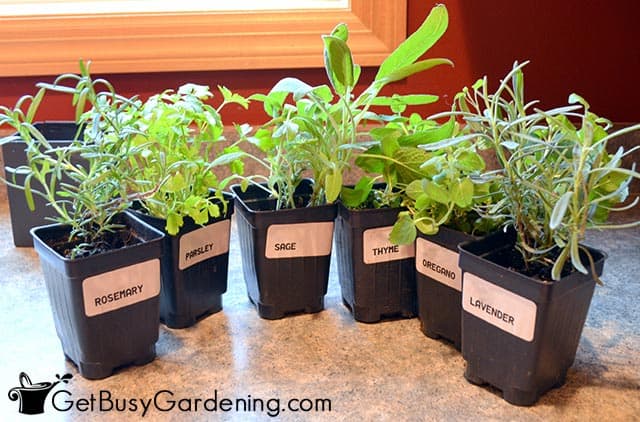
13 Best Herbs To Grow Inside
Below is my list of the best herbs to grow indoors. These are some of the most popular, and the ones that will give you the greatest success. I’ve also included some care tips and advice for how to pick the ones you want to try.
1. Bay Leaf
Believe it or not, you can have bay laurel (aka sweet bay) inside year-round. It made this list because it’s very hardy, tolerant of low light, and can handle dryer conditions.
It does grow pretty slowly, but that’s good since you don’t normally need to use much of it. But the more you snip off, the more you will get.
Put this one in a sunny south facing window, keep it on the dry side, and it will happily continue producing for you indefinitely.
2. Sage
Also known as culinary sage, this aromatic and beautiful indoor herb can last a long time in your kitchen.
It does well with bright light and prefers relatively dry soil. Without enough sun, it can start to reach for the window, so try to give it 6 hours or more.
Take care not to overwater, it doesn’t like soggy roots. So only water when the soil is no longer moist to the touch. Cut sprigs from it regularly to maintain the fullness, and prevent it from getting leggy.
3. Oregano
A staple in many homes for good reason, oregano is a perennial that can reach 18-24” tall and will thrive with very little attention.
It’s often used fresh, so keep snipping from it regularly to promote lots of new stems and leaves. Don’t worry if you have too much, you can dry the extra sprigs to fill up your spice rack.
This herb will do best indoors in a bright location or a sunny window. Water it regularly, and allow it to drain completely so that the roots don’t become soggy. Learn all about its care here.
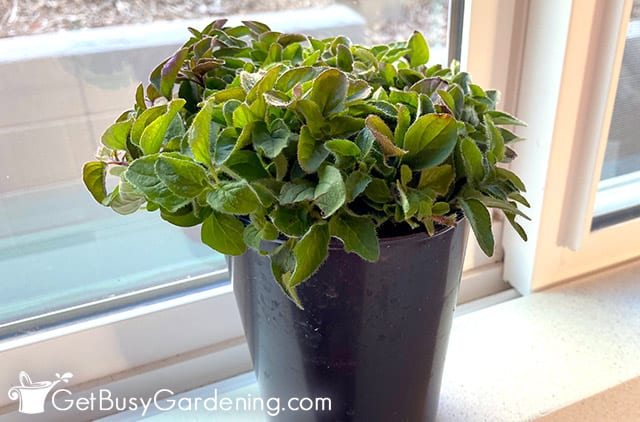
4. Thyme
This delicate herb smells wonderful, is popular to cook with, and does very well indoors. All varieties, including English and creeping thyme, are drought tolerant and thrive in low light.
It does best in an east or west-facing exposure where it will get plenty of indirect light. Keep the soil on the dry side, it should never stay wet.
Be sure to cut or pinch out the top of each stem often to keep it bushy and prolific.
5. Basil
All varieties do fairly well inside, including the most popular types, like sweet basil (Genovese), lemon, and Thai.
It is a bit more difficult to grow indoors than the other herbs in this list. But it’s still a fantastic choice, since a live plant will last much longer than the sprigs you get from the store.
For the best success, I recommend starting it from seed or taking and rooting healthy cuttings, rather than trying to bring in an established plant.
Place it in a sunny location, and protect it from cold drafts. Water only enough to maintain consistently moist soil, and pinch the tips often. Learn more about how to care for basil here.

6. Chives
Not only do they taste wonderful in almost any dish, chives will do very well in your home when given the right conditions.
Keep the soil on the moist side, but never sodden. They will tolerate less, just don’t let them dry out completely, or it could trigger dormancy.
Though they can handle brighter light, inside they prefer a cool location with indirect sun.
7. Lemon Balm
Also called balm mint, lemon balm is highly fragrant, and commonly used in teas or potpourri. This is another one of the best herbs for growing indoors because it thrives in low light conditions.
Keep it on the dry side to prevent root rot or mold, but never to the point where it starts pulling away from the pot. It does very well with indirect light, and will be happy in any bright room.
Cut sprigs or pinch out new leaves periodically to maintain fullness, and enjoy often.
8. Lavender
Well known for its wonderfully calming scent, lavender is an extremely popular herb for growing both indoors and out.
Inside the house, it does best in a warm and sunny, south facing window. They won’t bloom prolifically in low light, so if you want plenty of buds, give yours at least 6 hours of sun.
It doesn’t like to be soggy, and overwatering is the biggest mistake newbies make. So only add more when the top inch or so is dry to touch. Learn all about caring for lavender here.
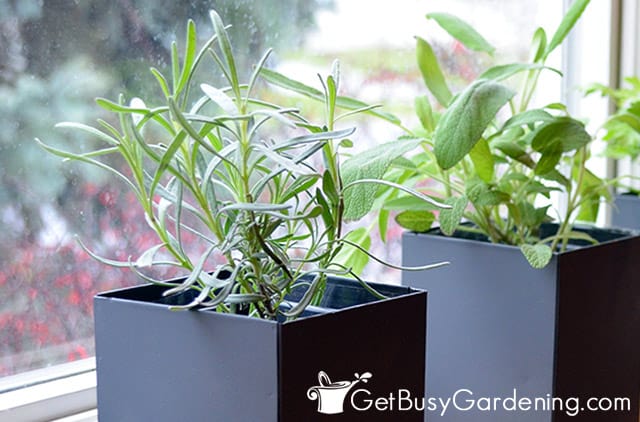
9. Parsley
Both curly and flat leaf parsley offer a refreshing and versatile flavor, and there are so many uses for it.
Unfortunately, since it’s biennial, you’ll only get to enjoy it for a year or two before the end of its natural lifecycle. But it’s easy to replace so you can always have some on hand.
It hates to have consistently wet feet, so take care to never overwater this one. Keep it in a well lit location, but not in direct sunlight.
10. Mint
All members of the mint family will all grow well indoors, and these wildly popular herbs are often used in both food and drinks.
They prefer indirect light, so you can place yours in front of a window that doesn’t receive much sunshine.
Only water when the top inch or so of soil feels dry to touch, and never let it become saturated.
11. Rosemary
If you love rosemary, then you’ll be thrilled to know that they do exceptionally well inside. It’s amazing to have them on hand whenever you need them.
Though they prefer full sun, they can do just fine with less light. They also perform better in drought conditions, so don’t give yours too much water.
Snip away new tips regularly to prevent legginess and encourage branching. Learn more about how to grow rosemary here.
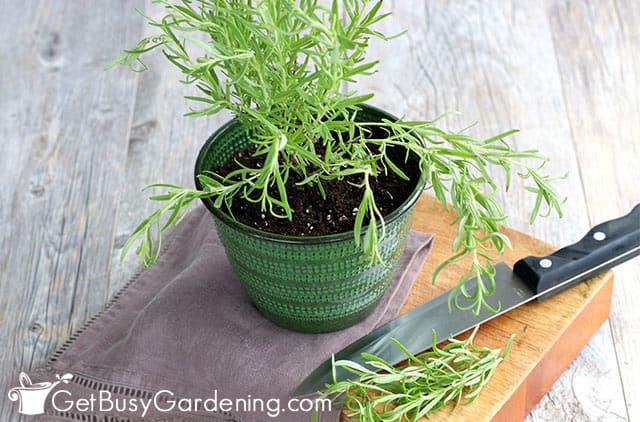
12. Tarragon
Though not as popular as some of the other herbs on this list, tarragon is excellent for growing indoors.
It prefers moderate temperatures and indirect light, so place it in a cooler spot in your home out of the direct sun.
Make sure it’s in a pot that has drainage holes, and use a well-draining soil to prevent root rot.
13. Marjoram
This delightful herb is a classic ingredient in many recipes, and adds a unique flavor to any dish.
It’s easy to maintain inside because it is drought-tolerant, but take care to never let it become completely dried out.
Though it prefers bright light, it will survive with less. Just make sure to pinch it often to prevent it from reaching for the nearest window.
With this list of the best herbs to grow indoors, you’re sure to find several that will thrive in your home – even if you live in a small apartment. So if you want to enjoy fresh herbs in your kitchen all year round, you can’t go wrong with any of these.
More About Herb Gardening
Share your top picks for the best herbs to grow indoors in the comments section below!
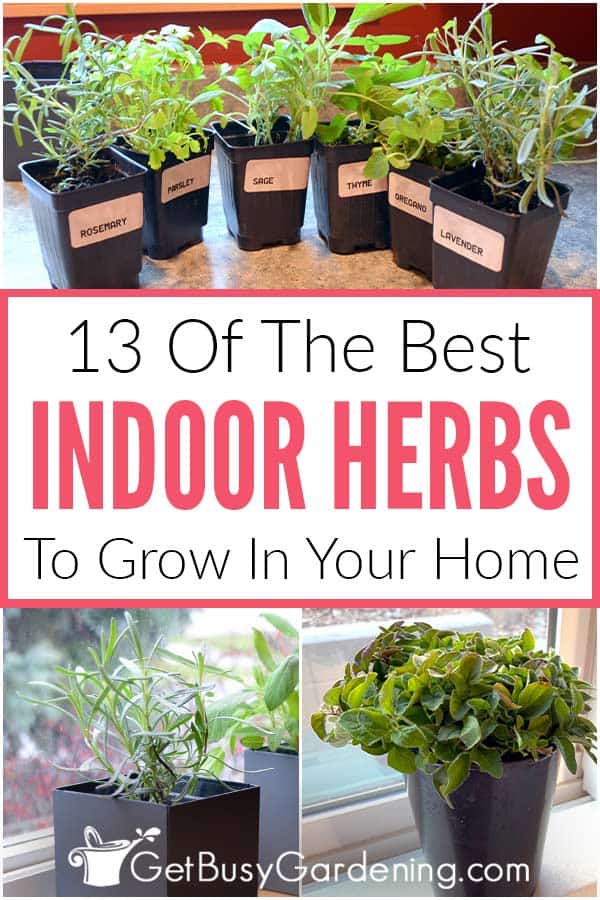
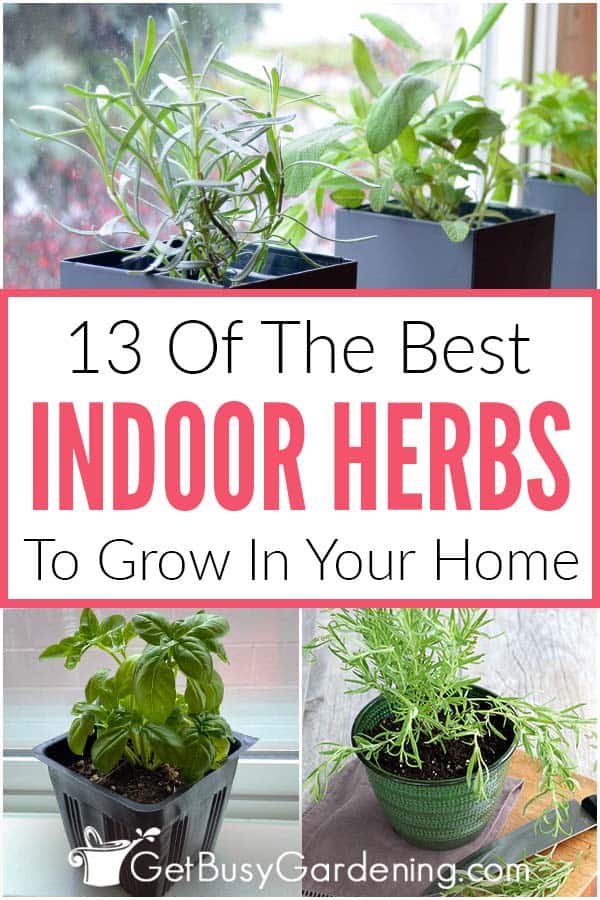
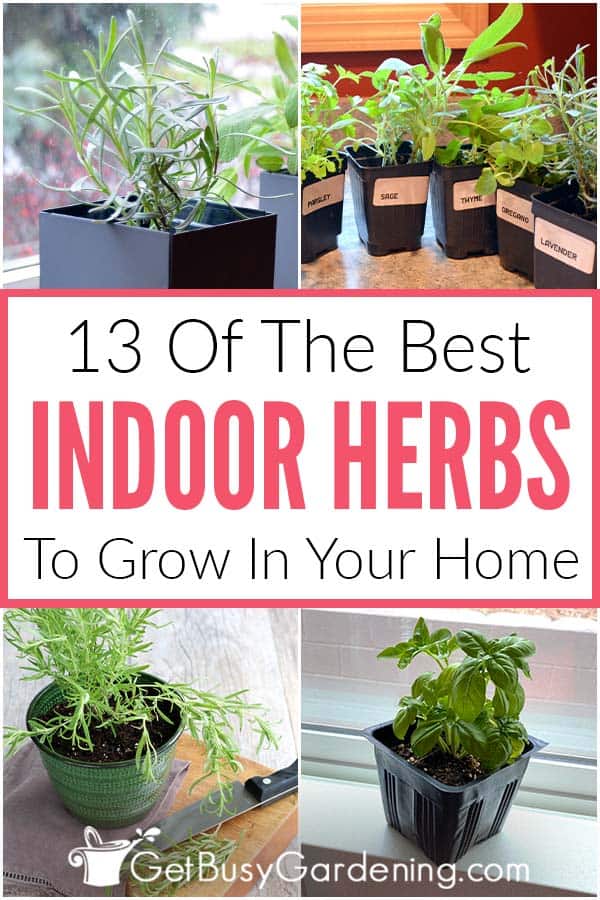


Leave a Reply